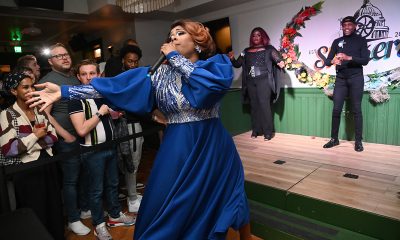Arts & Entertainment
Celebrating Ina Garten’s 13th cookbook with her biggest fan
Trent Pheifer has made all 1,272 of her recipes and counting
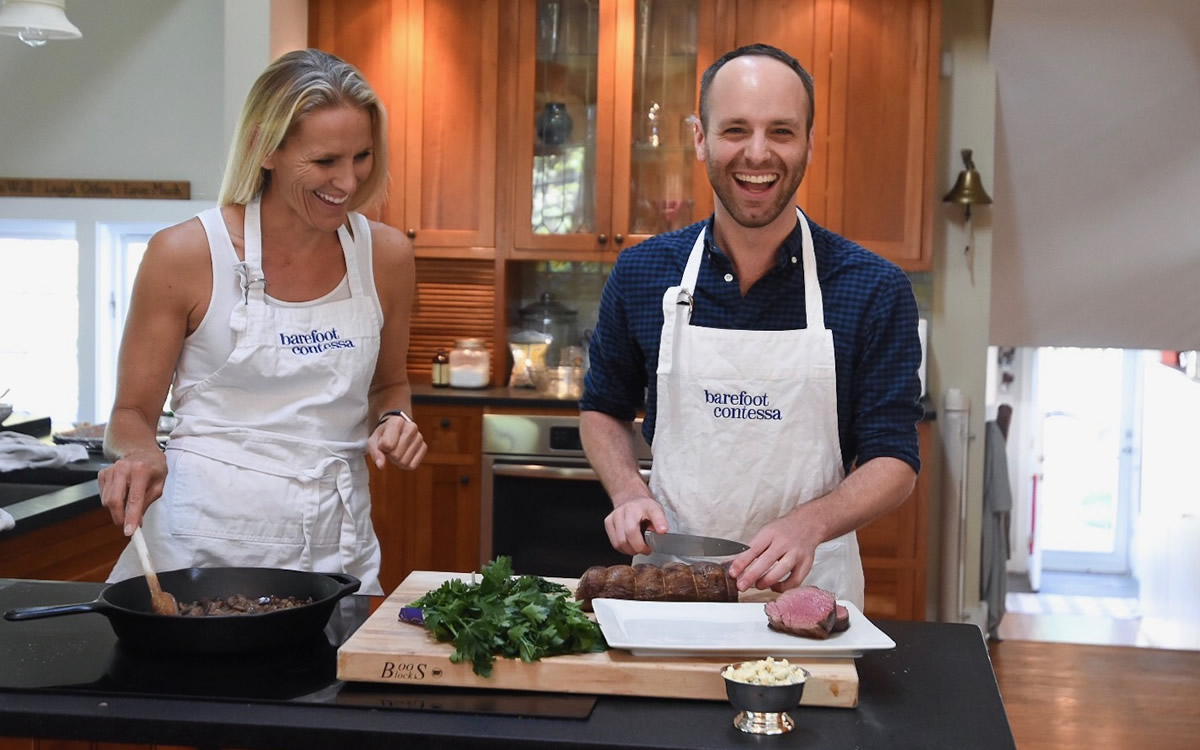
Ina Garten’s gay appeal is undeniable. From her fabulous home and gardens, to her creative cocktail recipes, to her many gay friends and over-the-top brunch parties, who wouldn’t want to count Ina as a friend?
He may not be on the brunch invitation list yet, but we can all live a bit vicariously through Trent Pheifer, 37, a home cook who chronicled his quest to cook all 1,272 of Garten’s recipes on Instagram (@storeboughtisfine), catching her eye and ultimately cooking with her on a Zoom event earlier this year.
To celebrate the release of Garten’s 13th cookbook this week, “Go-To Dinners,” the Blade sat down with Pheifer to talk all things Ina.
“She pulled me in, in a way that wasn’t about cooking,” Pheifer said. “She was always having a good time, it was approachable.”
Pheifer said that when he first started cooking he tried Julia Child, but ran into problems with her lengthy recipe for Beef Bourguignon.
“A lot of those recipes weren’t working out for me because I didn’t have the skills,” he said. “I had made a few of Ina’s recipes and everything was easy to read and gave me confidence in the kitchen and the results were delicious.”
Pheifer loved the film “Julie and Julia,” about a Julia Child fan who cooked all of the iconic chef’s recipes, and thought he would cook his way through Ina’s many recipes.
It took him nearly six and a half years, but he did it and in March of this year, he reached the end, culminating in a memorable Zoom event with Ina herself in which Pheifer cooked the final recipe, her Boston Cream Pie, a notoriously tricky dish.
What did he learn during all that time in the kitchen as an amateur cook?
“It’s about diving in — you just have to do it,” he says. “So many people think they aren’t good cooks because they’ve never cooked or they’ve tried something too complicated. … Don’t overdo it when getting started and slowly build.”
Pheifer noted that he was eating mostly prepared foods from Trader Joe’s when he started and now can make anything in Ina’s vast repertoire. But learning to cook isn’t all about impressing dinner guests with fancy dishes. Pheifer, who’s gay and works as a fundraiser for the Advertising Council in New York City, said the bigger lesson was discovering his self-confidence.

“I’ve always struggled with self-confidence — not being good enough or smart enough – and I think in the last seven years of this project my confidence has skyrocketed,” he said. “Having worked hard at something and being recognized, having fun with people, I found confidence in being myself and that has spilled over into my job and life. I wouldn’t be where I am without it.”
Pheifer also shared his thoughts on Ina’s appeal to gay men, noting that about half of his Instagram followers are men, most of whom he assumes are gay.
“A lot of gay men are attracted to strong women,” he said. “A lot of gay boys grew up with ‘Barefoot Contessa’ and a lot of her friends are gay and it’s a place you knew you were welcome. She never waved the Pride flag, but I knew I would be welcomed into her home.”
Aside from baking cookies with his mother and grandmother as a child, Pheifer didn’t grow up with an interest in the kitchen, though he noted the family sat down to dinner most nights together. By college he wasn’t cooking at all.
“When I was approaching 30 I realized I didn’t know how to cook for myself and it’s expensive to go out to dinner every day,” he said. Julia Child inspired him at first, until that run-in with the Beef Bourguignon. After discovering Ina’s recipes were more approachable, he only encountered one bad experience while cooking his way through her books: vegetable lasagna.
The recipe calls for roasting three trays of vegetables and making a sauce — not an easy feat in a small New York City kitchen. “There were too many elements at the same time,” he says.
Undeterred by the laborious lasagna recipe, Pheifer soldiered on for nearly seven years, sometimes wondering if all his efforts and Instagram posts would be noticed. He says he didn’t start the project hoping to get media attention, but there were thoughts that maybe all of this could lead somewhere.
“At some point you get years into the project and wonder, will anyone notice,” he said. “Ina is so beloved that she inspired this fan base of people who love her and I think I got lucky that no one else was doing it already.” He added that he didn’t do any outreach and the subsequent media attention was organic and came via word of mouth.
One highlight of Pheifer’s culinary journey came unexpectedly while on a vacation in Paris, which happens to be Ina Garten’s favorite city where she and husband Jeffrey own an apartment. He was on a foodie trip with friends and snagged a coveted table at Verjus, known for its tasting menu, when he spotted Ina and Jeffrey at a table in the intimate dining room. When they finished, Pheifer summoned the courage to approach his culinary idol.
“It was kismet,” he says, “the color ran from my face. I approached after they finished and my friend knocked over their bottle of wine as I was shaking their hands.”
He introduced himself as the man behind @storeboughtisfine and Ina immediately recognized him and they posed for a photo.
“I couldn’t think of a more magical way to meet her,” he said, “this was such an intimate experience and in the city she loves the most. Ina is obsessed with Paris so it was a magical moment.”
With Ina’s new book out Oct. 25, Pheifer says he will continue his quest to cook all of the recipes. He plans to tackle two or three each week.
And if Pheifer could pick the theme for Ina’s 14th cookbook, he says it would be “Store Bought is Fine.” Ina has said her next book will be a memoir and Pheifer hopes she will write about what drives her to create.
Although Pheifer turns to Ina for French, Italian, and American dishes, he said he collects all sorts of cookbooks and his favorite this year is “Korean American” by New York Times writer Eric Kim.
As for Pheifer’s favorite Ina recipe to make, he says it’s her rigatoni with sausage and fennel from “Cooking with Jeffrey.” Least favorite: pear and parsnip gratin. His go-to Ina dinner: Shrimp and Linguini Fra Diavolo with Outrageous Garlic Bread. Go-to dessert: Mocha Iced Box Cake. And his favorite Ina cookbook is “Barefoot Contessa At Home.”
Ina Garten’s latest, “Go-To Dinners” is out Oct. 25 from Clarkson Potter and includes breakfast-for-dinner options, make-ahead ideas, and simply assembled dishes.

The Blade may receive commissions from qualifying purchases made via this post.
Brazil
Black transgender singer from Brazil wins three Latin Grammy Awards
Liniker performed at Las Vegas ceremony
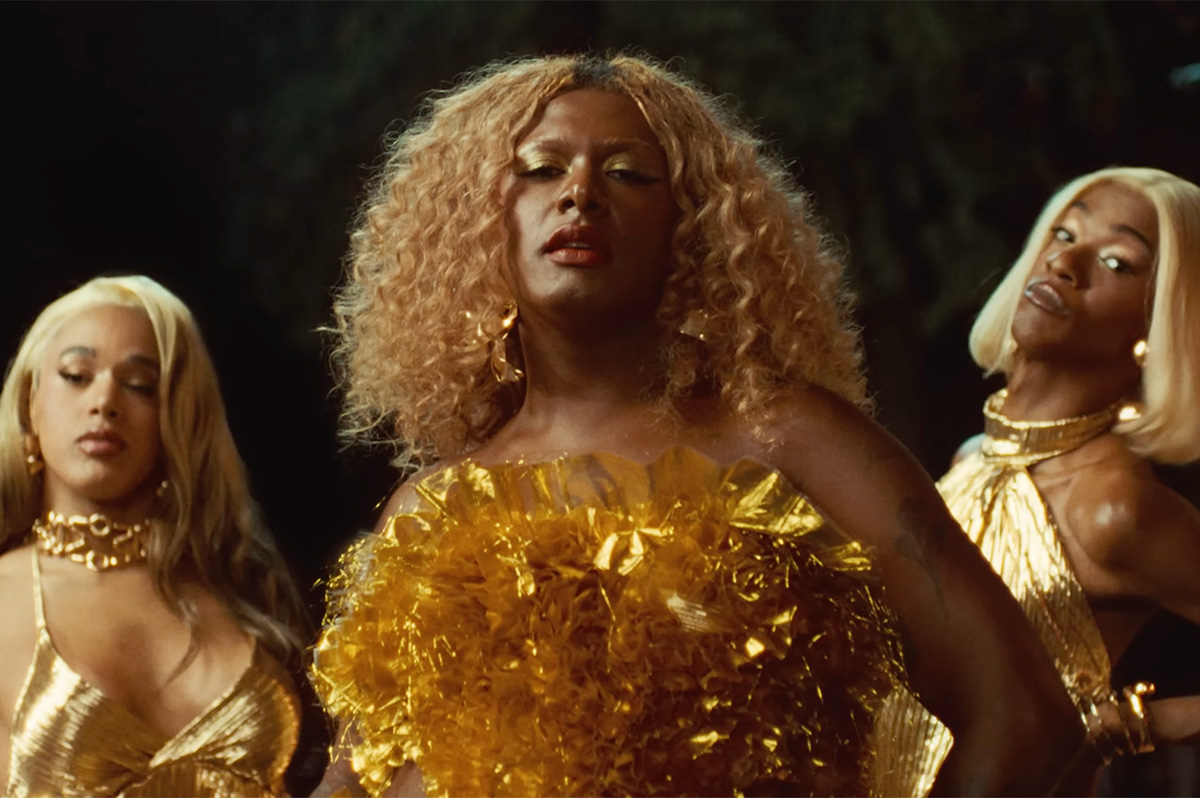
A Black transgender singer and songwriter from Brazil on Nov. 13 won three Latin Grammy Awards.
Liniker, who is from Araraquara, a city in São Paulo State, won for Best Portuguese Language Song for her song “Veludo Marrom,” Best Portuguese-Language Urban Performance for her song “Caju” from her sophomore album of the same title, and Best Portuguese Language Contemporary Pop Album for “Caju.”
She accepted the awards during the Latin Grammy Awards ceremony that took place in Las Vegas. Liniker also performed.
“I’ve been writing since I was 16. And writing, and poetry, have been my greatest form of existence. It’s where I find myself; where I celebrate so many things I experience,” said Liniker as she accepted her first Latin Grammy on Nov. 13. “And being a composer … Being a trans composer in Brazil — a country that kills us — is extremely difficult.”
Liniker in 2022 became the first openly trans woman to win a Latin Grammy.
a&e features
Guillermo Diaz on his role as a queer, Latino actor in Hollywood
Shattering stereotypes and norms with long resume of roles

Actor Guillermo Diaz has been working hard in the entertainment industry for more than three decades. Proud of his heritage and queer identity, he has broken through many glass ceilings to have a prolific career that includes tentpole moments such as roles in the films Party Girl, Half Baked, and Bros, and in major TV shows like Weeds and Scandal, and even in a Britney Spears music video. This season, he made his feature-length directorial debut with the film Dear Luke, Love Me.
In an intimate sit-down with the Blade, Diaz shares that he attributes a lot of his success to his Cuban upbringing.
“Well, it prepared me to learn how to lie really well and be a good actor because it was a lot of acting like you were straight, back in the eighties and nineties (laugh). Another thing I learned from my Cuban immigrant parents is that they work super hard. They both had two jobs; we were latchkey kids, and I just saw them constantly working and wanting to provide for us by any means. So that was super instilled in me. That was the one thing that really stuck out that I admire and respect.”
Besides Diaz’s recurring roles on TV, his resume includes appearances in just about every genre of programming out there. If there is a major show out there, he was probably on it. Law and Order, Girls, The Closer, Chappelle’s Show, ER, Party of Five, and the list goes on. He’s accomplished more in his career thus far than most actors do in a lifetime. There is no doubt he is a hard worker.
“It’s a sign that I just loved to work, and it’s funny looking back at it now because you see all those things, but at the time it was just the next gig, the next job. I was just wanting to keep working and acting and learning and doing all that stuff. Then it sort of accumulates, and you look back and you’re like, damn! That’s a lot of stuff!”
Acting was never on Diaz’s radar until he was asked to fill in for a friend in a Beastie Boys medley for a talent show when he was a sophomore in high school.
“I did it and fell in love with it. I was teased a lot in high school. Then, when I did that performance, all those people who teased me were like, you were so great! So I looked at it initially as a thing of like, oh, this is where I’m accepted and people like me when I’m on stage. It’s kind of sad, too, because that’s what I latched onto. And then of course, I fell in love with the craft and performing and acting, but that initial rush was because all these people who were messing with me and teasing me all of a sudden liked me. And I was like, this is what I have to do.”
Little did Diaz know that he would break the mold when it came to stereotypical casting. When he first hit the industry, diversity and positive representation were not a thing in Hollywood.
“You just kind of accepted at the time. It was the early nineties. 90% of the time, it was playing a thug or a gun dealer, or a crack head – it was all bad guys, negative characters. But it was either that or not act and not be in anything. So you just kind of accept it, and then you have this sort of vision or hope that in the future it’s going to get better.
Diaz’s management was trepidatious about him playing gay roles for fear of being typecast. But Diaz did play a handful of gay roles early on, although he passed on But I’m A Cheerleader, which went on to become a gay cult classic. Diaz decided early on that he was not going to hide his sexuality. Diaz appeared in the film Stonewall. That was the defining point for him in sharing his identity.
“Being cast in that historical sort of dramatization of the 1969 Stonewall riots – I couldn’t believe I was in the midst that I was in the middle of doing this and playing the lead drag queen on the film. I just felt so honored, and I knew it was important, and I knew I needed to do a really good job. I thought, what a special moment this is. And it kicked my ass shooting that movie.
I remember after doing Stonewall, people saying, well, now you’re either going to have to make a choice if you’re going to lie, or if you’re going to just be honest, and you’re going to have to be out from now on if you’re going to be honest. And I was like, I’m not going to freaking lie. When they’d asked me, I would say I was gay. I think because I never tried to hide it, it didn’t become a thing. So people just kind of ignored it. It didn’t mess with me or my career. I don’t know. Or I just got lucky. I don’t freaking know.”
As a queer, Latin actor, Diaz is all too aware of what is happening politically and socially in the world towards minority communities. Does he think actors have a place in politics?
“For sure. I mean, we’re people first, right? Like, I hate when people sort of are like, oh, you’re an actor, shut up. I’m super political and outspoken, and I’m that guy who will say shit. I’m on the right side of history, at least. I’m not being complicit and silent. So, yeah, I think actors for sure have a place in politics. Absolutely.”
While directing was on Diaz’s radar, it wasn’t something that he was actively searching out. But as life would have it, his friend Mallie McCown sent him her script for Dear Luke, Love Me, a film she would play the lead in. Diaz was hooked.
“It was one of those scripts that I had to keep putting down every like 20 pages. I would put it down because I didn’t want it to end. It was so good. Originally, I was just going to come on as a producer of the film, and then the director dropped out, and then Mallie asked me if I was interested in directing. I was scared as shit. I had never directed a feature film. But I was like, it’s now or never.”
The film covers a decade of the friendship between Penny and Luke, covering themes of platonic love, asexuality, co-dependence, and self-identity. With most of the film focusing on just the two leads, Diaz has crafted an intimate and raw film. What is his message with the film?
“That love is complicated, but it’s beautiful and rewarding and worth all the heartache. I believe that. I don’t want to give away too much in the film either, but I think everyone can relate to it because there’s heartache and there’s pain, and there’s beauty and there’s love.”
And in looking at his past work and in looking toward his future career, what kind of legacy does Diaz want to build?
“That I broke some ground, that I knocked down some walls as an artist; I’m hoping that made a difference. It’s funny because when you’re in it, you’re not thinking about all this stuff that could possibly pave the way for other people. You’re just kind of moving along and living your life. But yeah, I would hope that I broke down some walls as a queer Latino.
I hope that people can sort of get something out of me trying to live as authentically as I can, just being my queer self. Hopefully, that helps someone along who is having some troubles being accepted or being comfortable with who they are.”
Photos
PHOTOS: Cheers to Out Sports!
LGBTQ homeless youth services organization honors local leagues
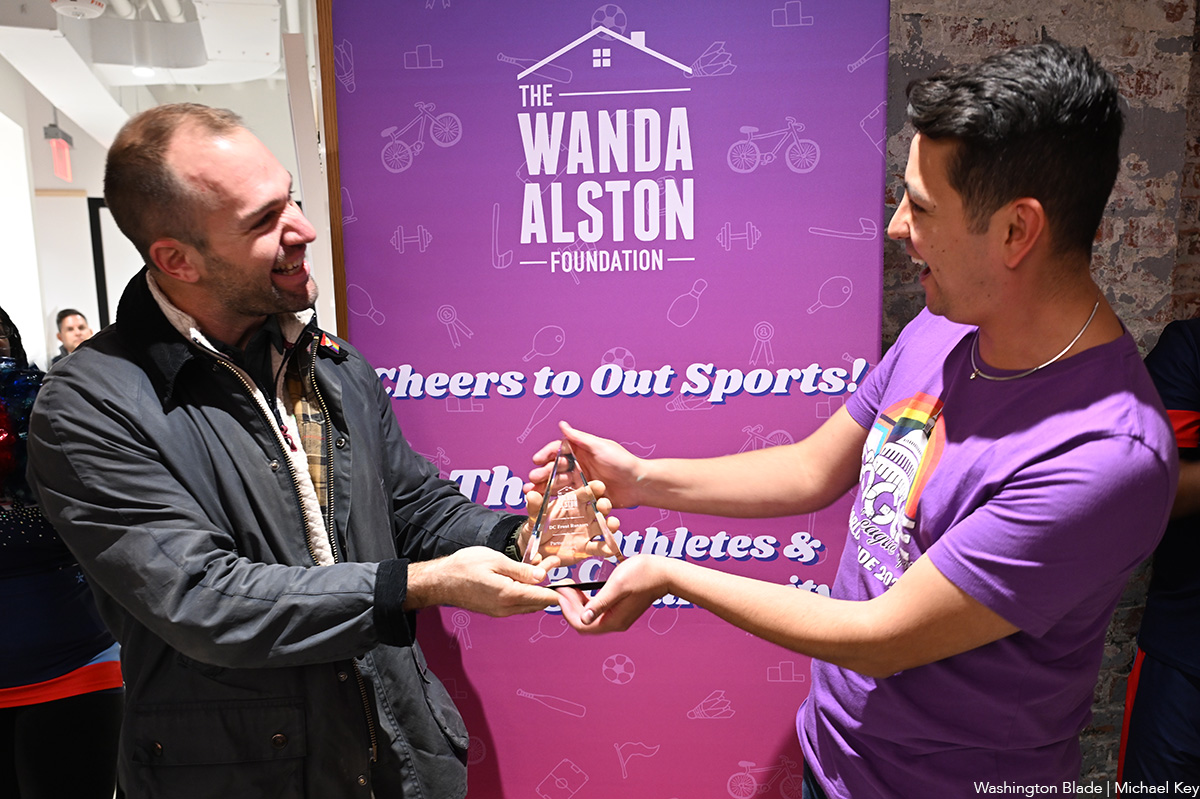
The Wanda Alston Foundation held a “Cheers to Out Sports!” event at the DC LGBTQ+ Community Center on Monday, Nov. 17. The event was held by the LGBTQ homeless youth services organization to honor local LGBTQ sports leagues for their philanthropic support.
(Washington Blade photos by Michael Key)
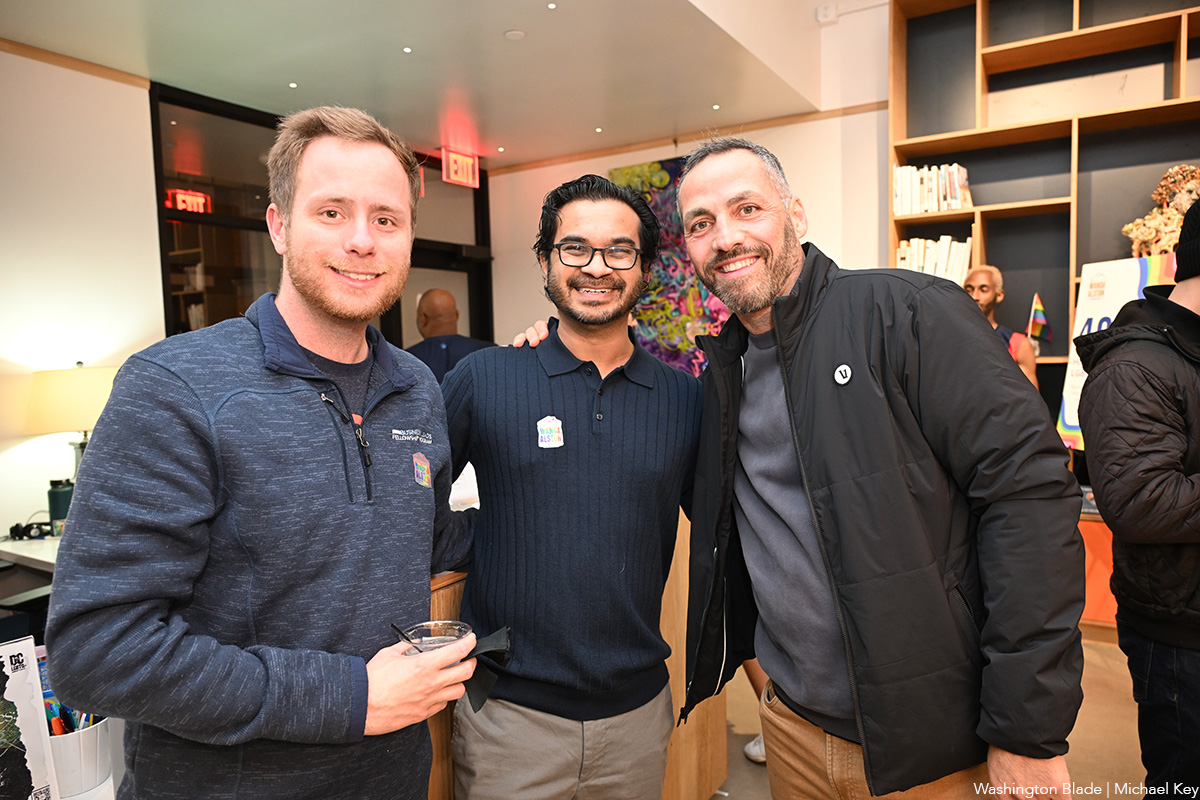
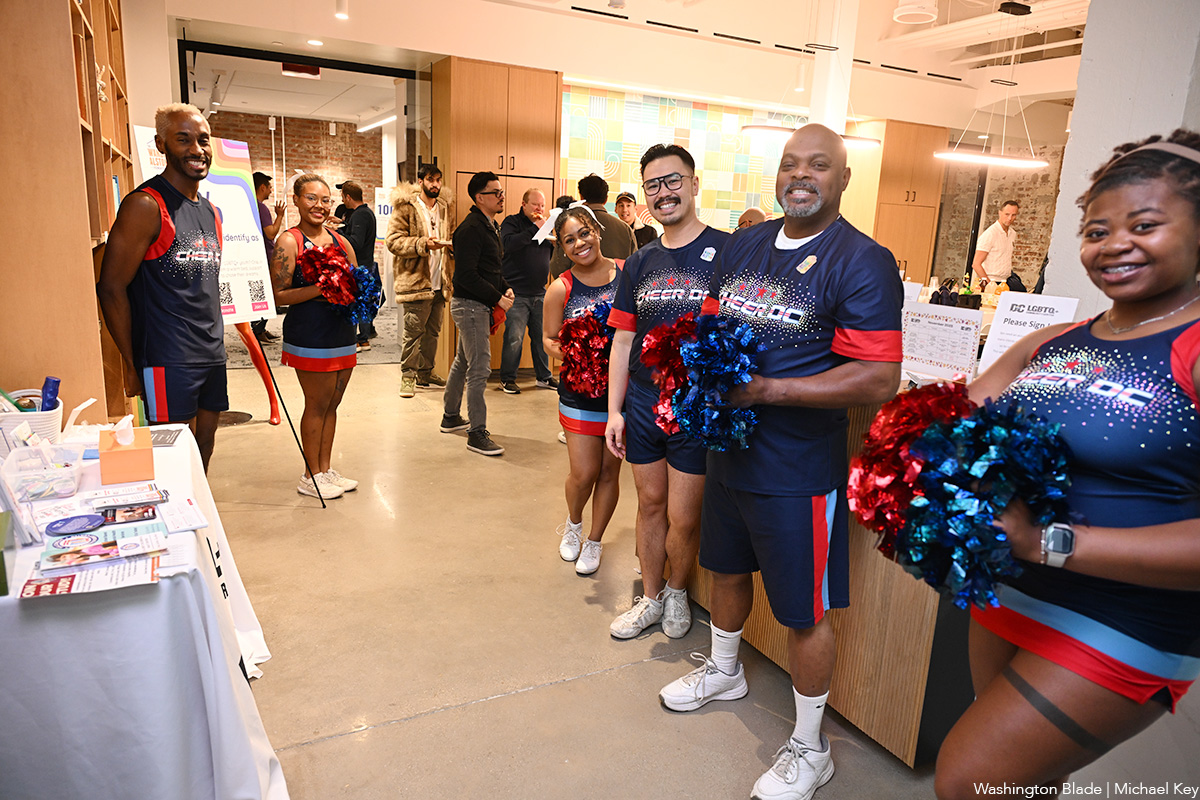
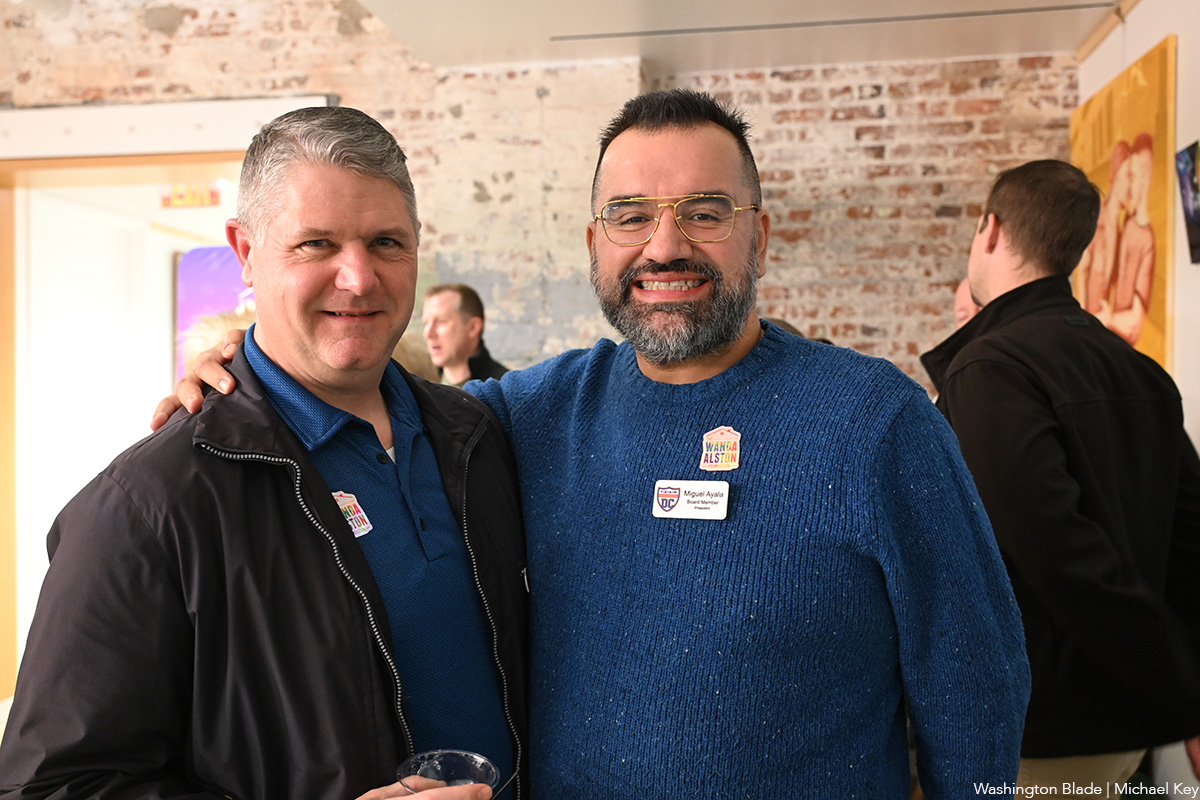
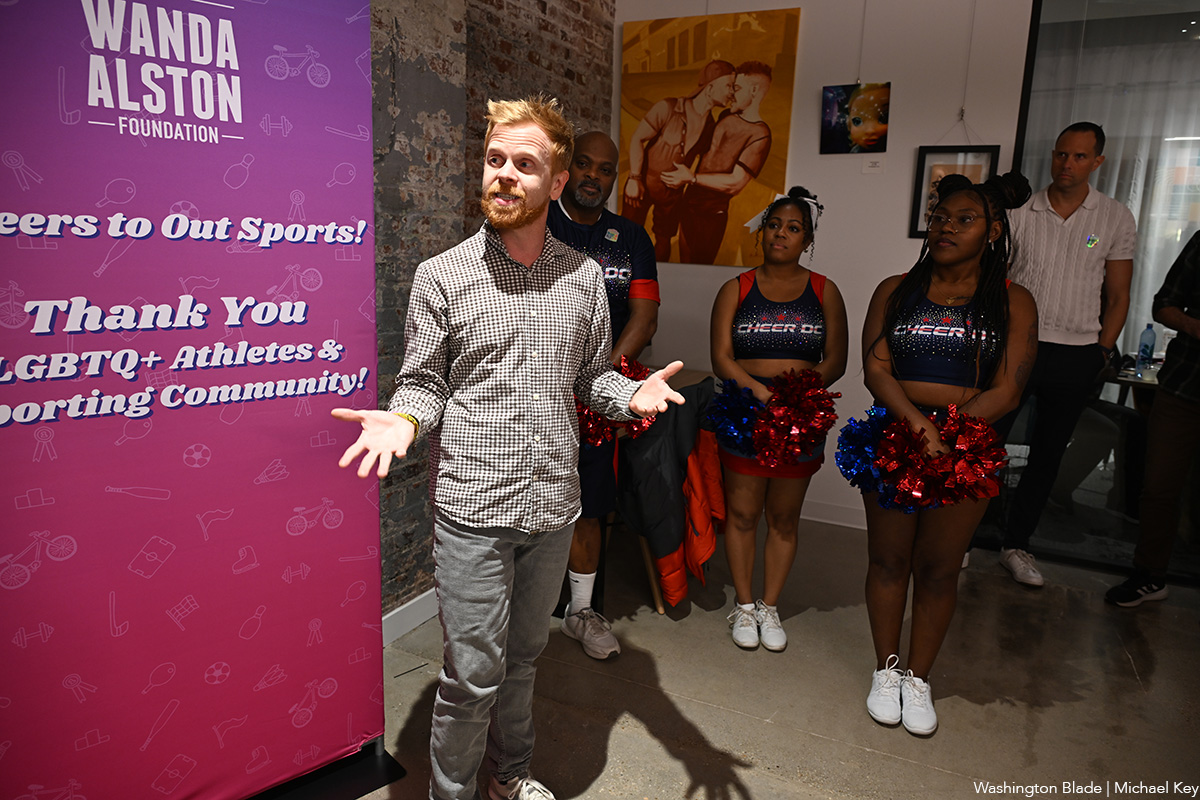
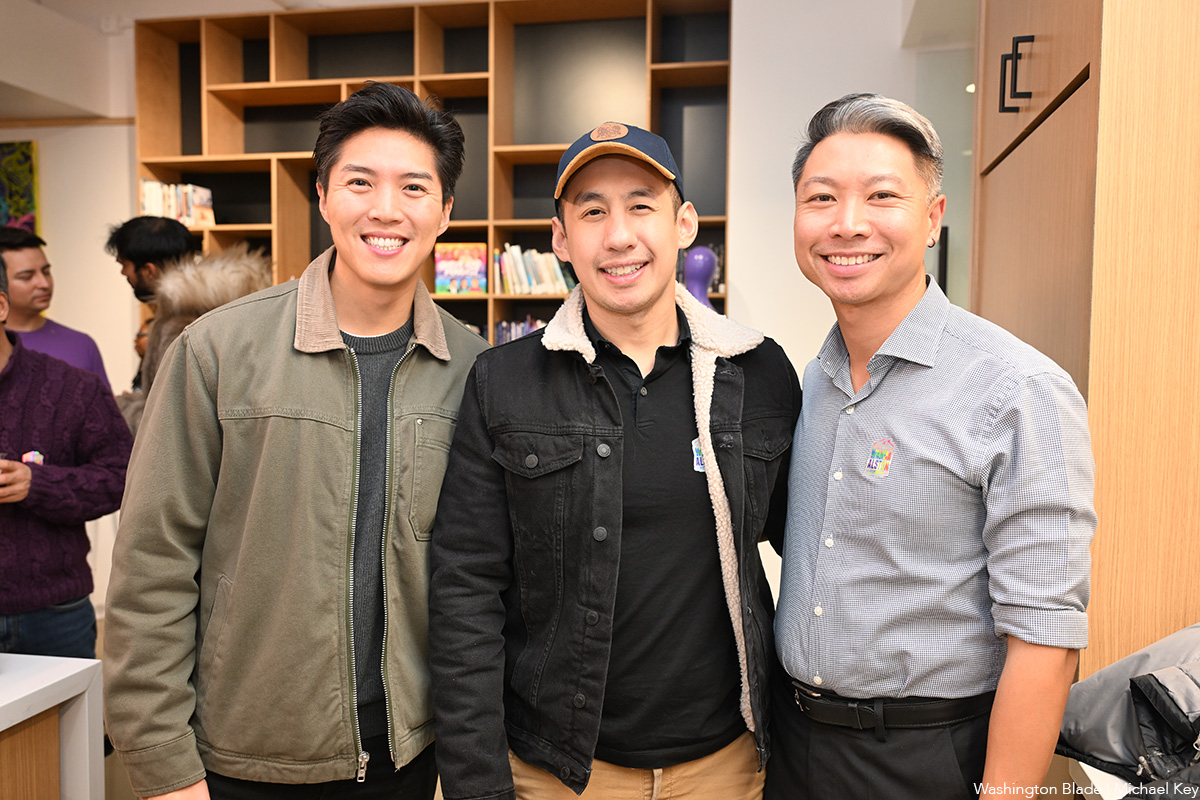
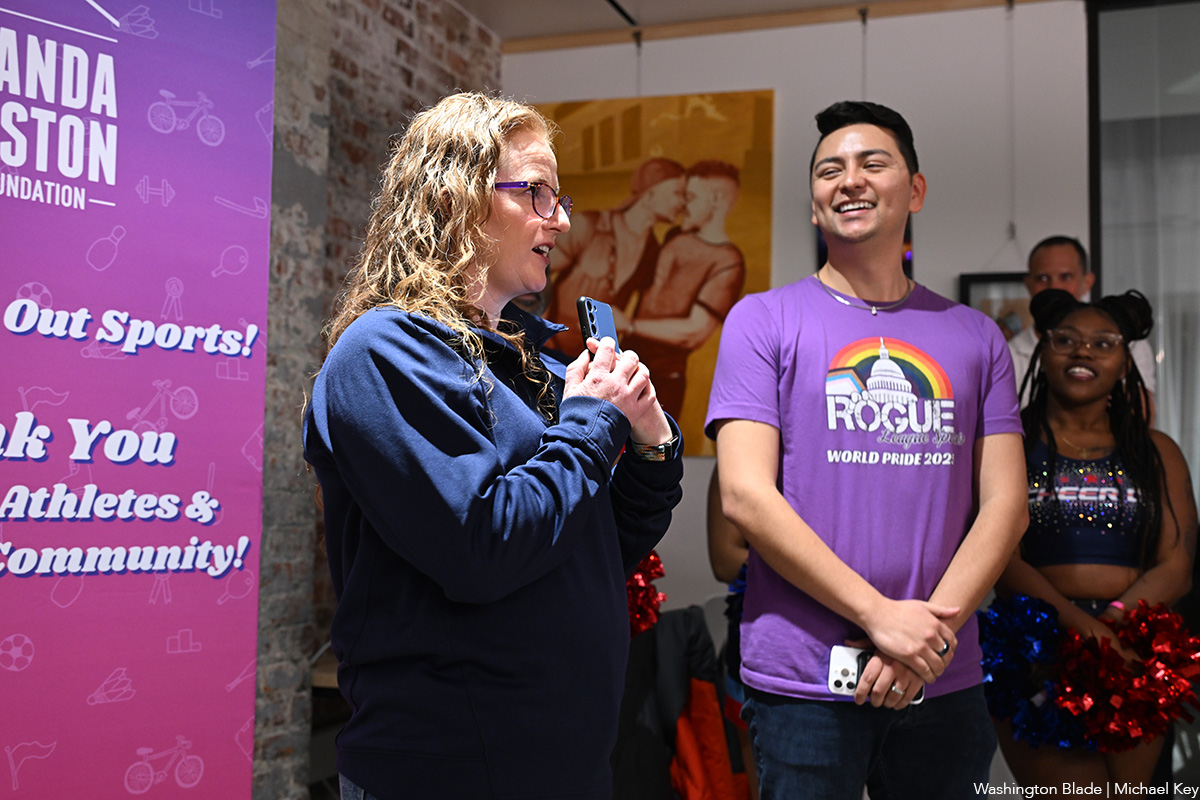

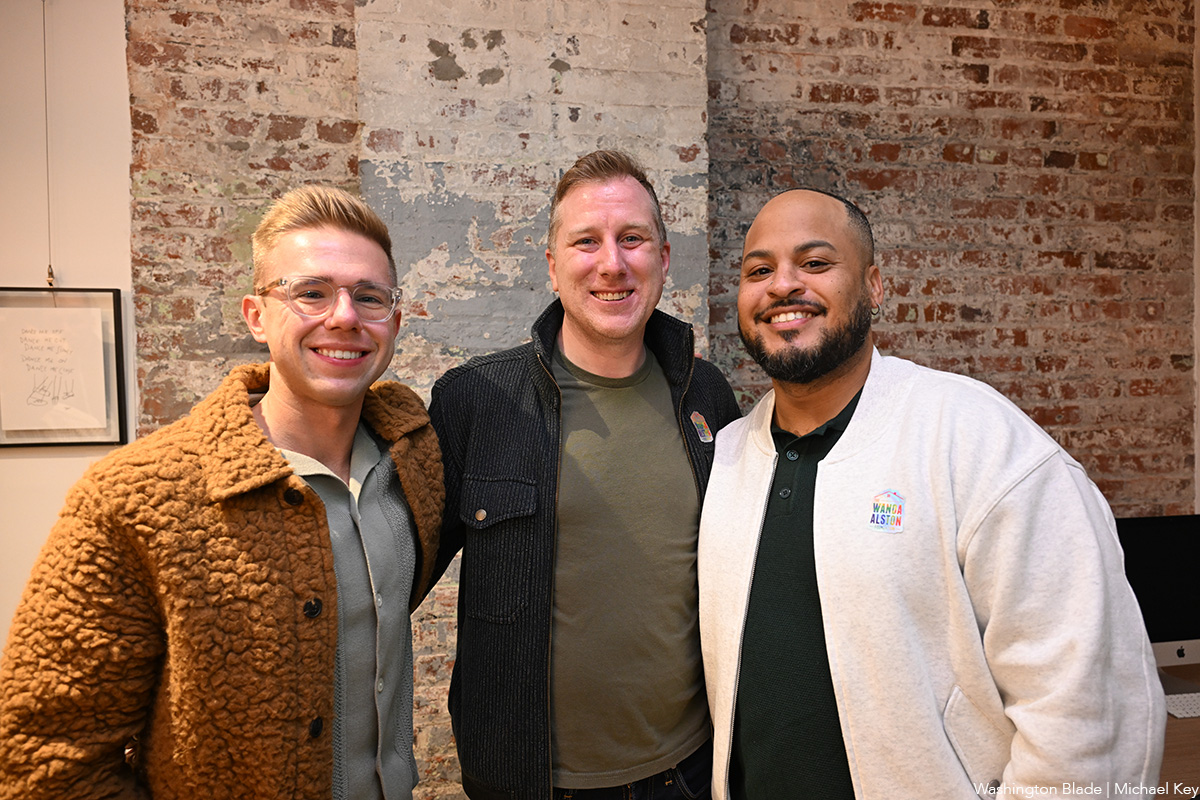

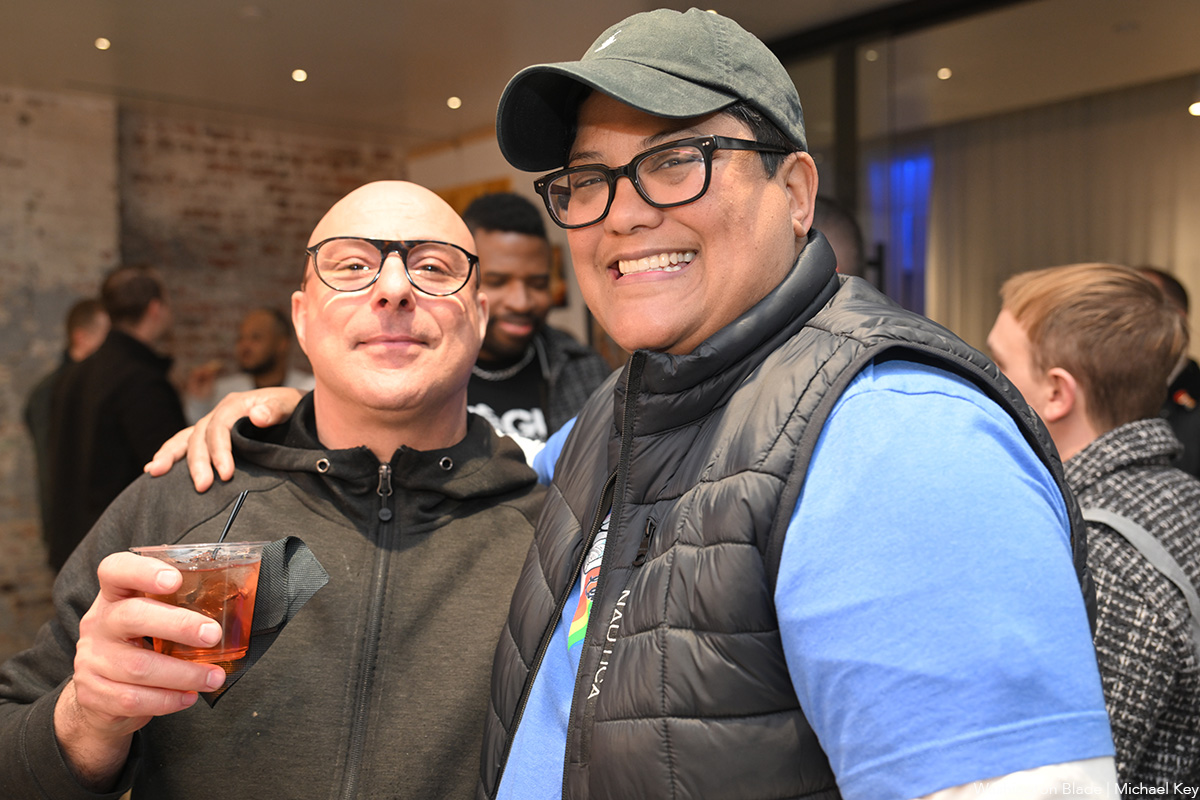
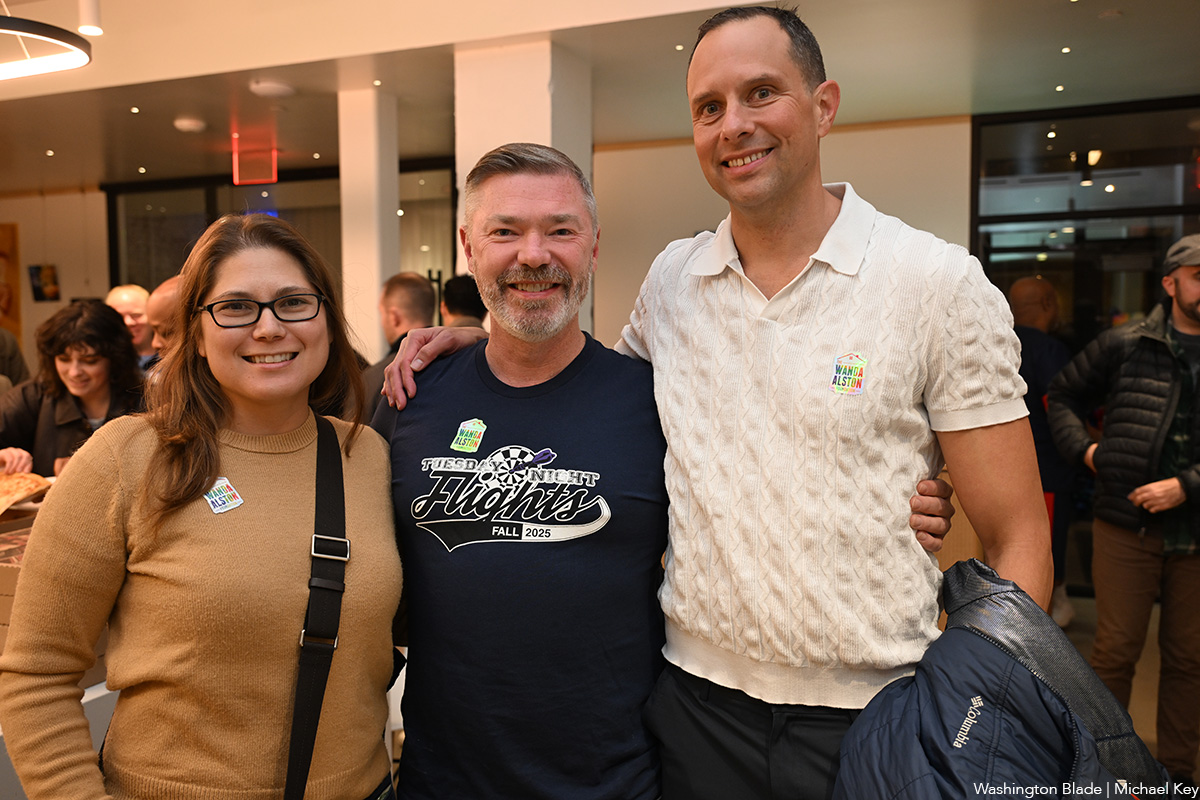
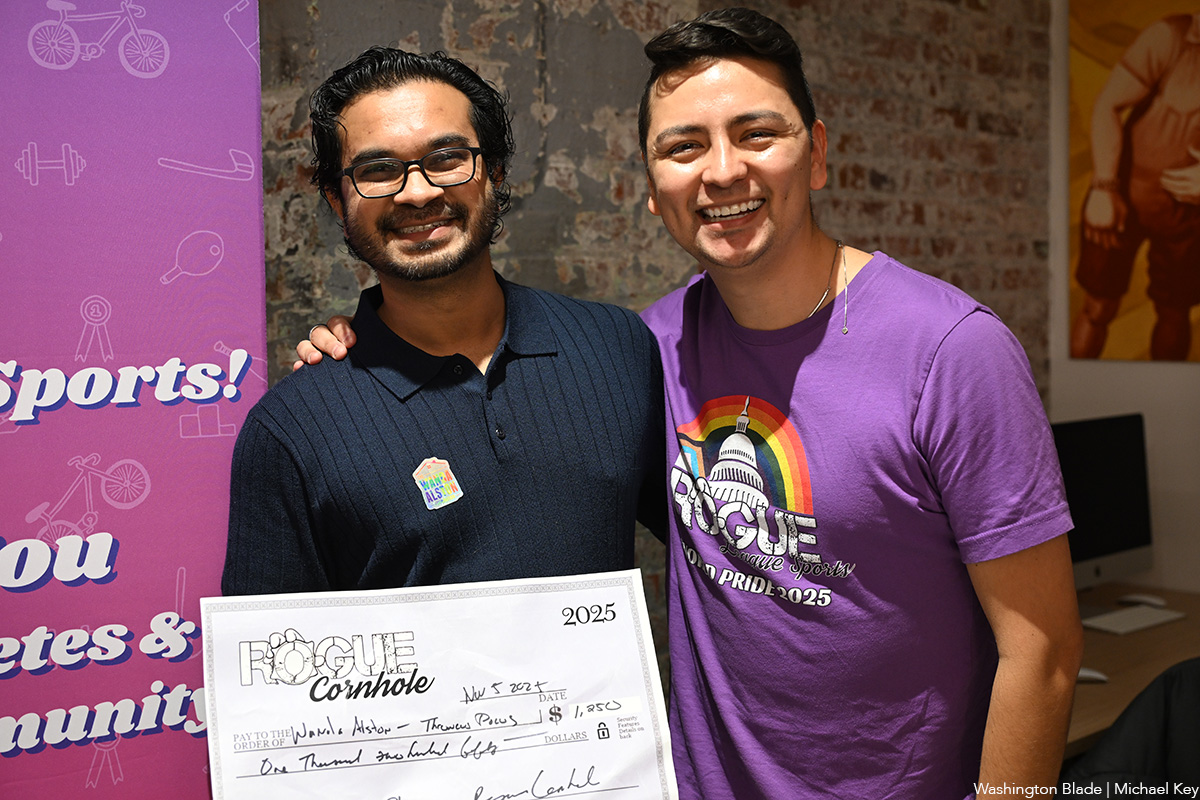
-

 District of Columbia3 days ago
District of Columbia3 days agoD.C. LGBTQ bars ‘hanging in there’ amid tough economy
-

 District of Columbia1 day ago
District of Columbia1 day agoNew LGBTQ bar Rush set to debut
-

 National3 days ago
National3 days ago213 House members ask Speaker Johnson to condemn anti-trans rhetoric
-

 Chile4 days ago
Chile4 days agoChilean presidential election outcome to determine future of LGBTQ rights in country
















